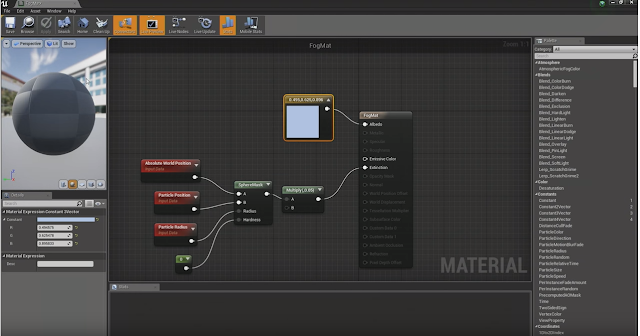Simple Materials in UE4
With a few hectic months out of the way and a change of direction, I'm moving away from modeling and more into UE4 layout and lighting. Hopefully, I can continue to build scene models but currently, there just isn't the need in the department.
The basic blueprint for 'texture' into 'material' is simple enough and one that most model makers understand. Base, specular, roughness, emissive and normal maps.
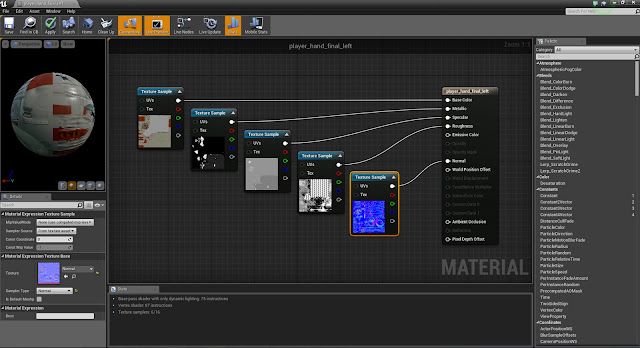
This is fine for simple projects but material 'instances' are better for great control within a dynamic pipeline. 'Parameters' are all used as much as possible. These are great for setting a minimum and maximum range and can be easily adjusted.
Below is an example of a material ready to be instanced. It has parameter control with an emissive red (this can also be a parameter colour but the logo design is already red so that colour is locked down) and with a nice normal multiplier. This is done through the blue channel as plugging in a simple value increase will not work.
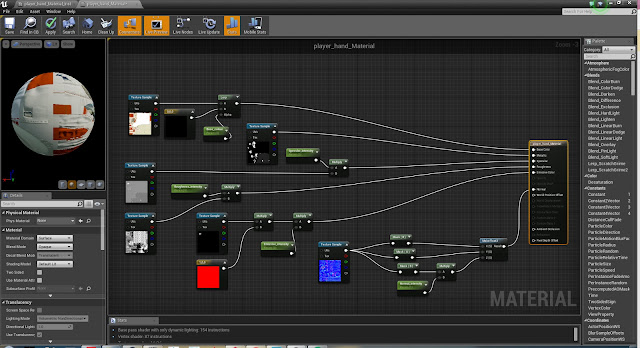
As you can see below, the material instance has sliders to control the material attributes.
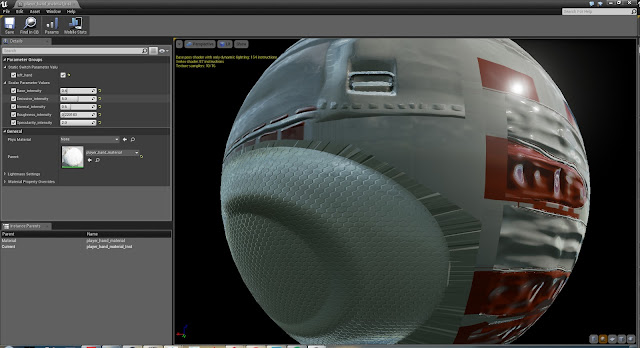
From here you can start to get a big fancy. I noticed that in our project we were duplicating all the materials for the left and right-hand meshes, with a simple 'switch' node parameter, this would allow the same instance to be used for both mesh and can be easy selected with a tick box. Works great too!
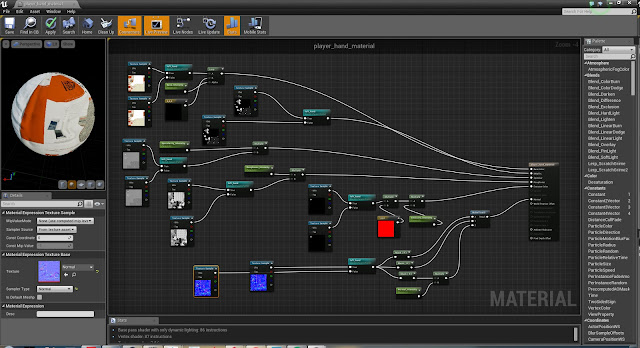
This is standard pipeline procedure for materials and makes a huge difference. Once you have the basics down, it's a gateway into more complex and fun materials!
The basic blueprint for 'texture' into 'material' is simple enough and one that most model makers understand. Base, specular, roughness, emissive and normal maps.

This is fine for simple projects but material 'instances' are better for great control within a dynamic pipeline. 'Parameters' are all used as much as possible. These are great for setting a minimum and maximum range and can be easily adjusted.
Below is an example of a material ready to be instanced. It has parameter control with an emissive red (this can also be a parameter colour but the logo design is already red so that colour is locked down) and with a nice normal multiplier. This is done through the blue channel as plugging in a simple value increase will not work.

As you can see below, the material instance has sliders to control the material attributes.

From here you can start to get a big fancy. I noticed that in our project we were duplicating all the materials for the left and right-hand meshes, with a simple 'switch' node parameter, this would allow the same instance to be used for both mesh and can be easy selected with a tick box. Works great too!

This is standard pipeline procedure for materials and makes a huge difference. Once you have the basics down, it's a gateway into more complex and fun materials!


